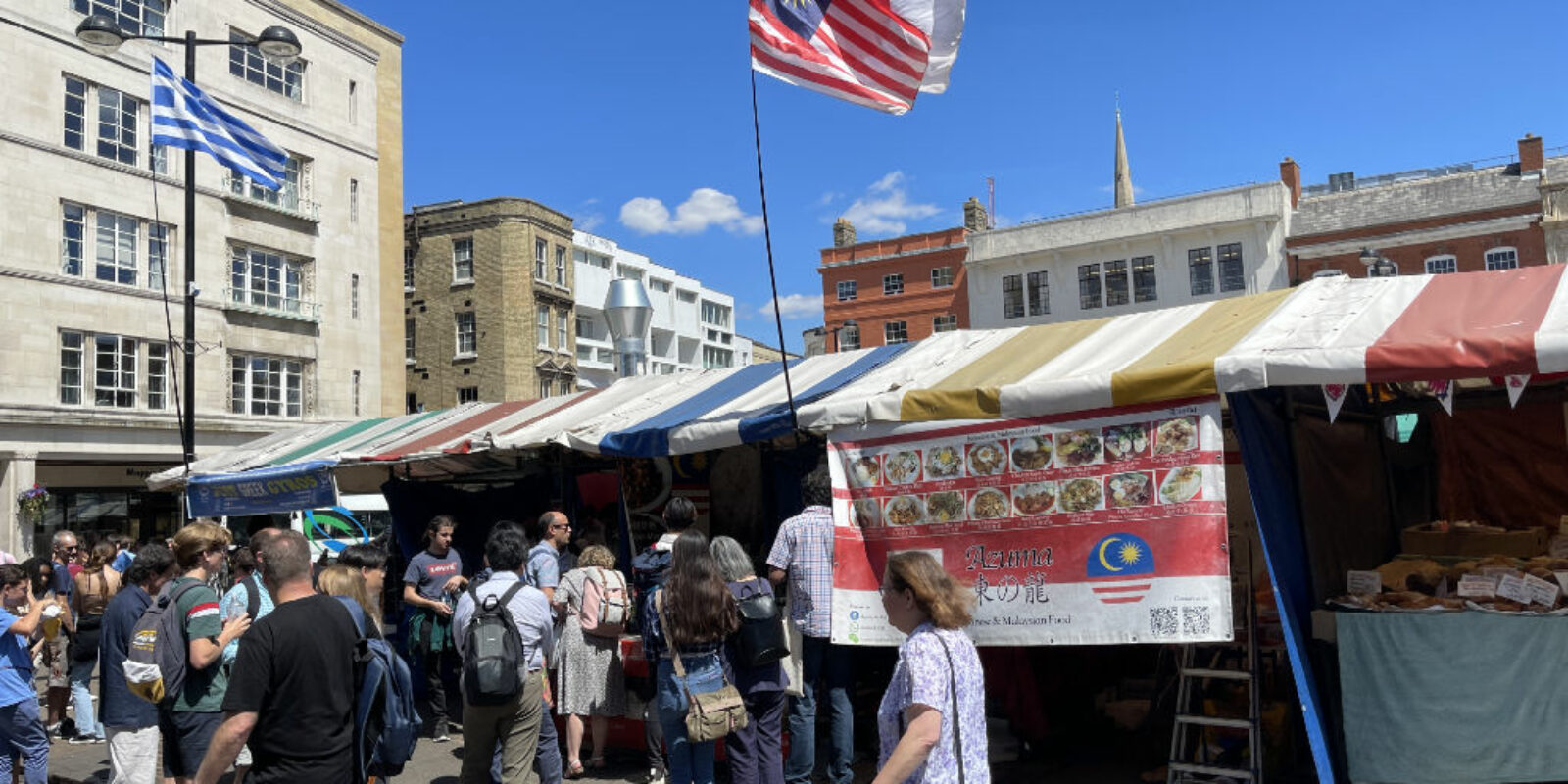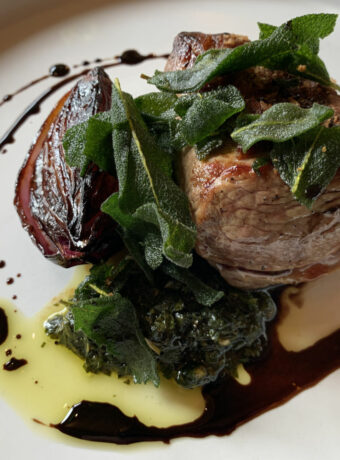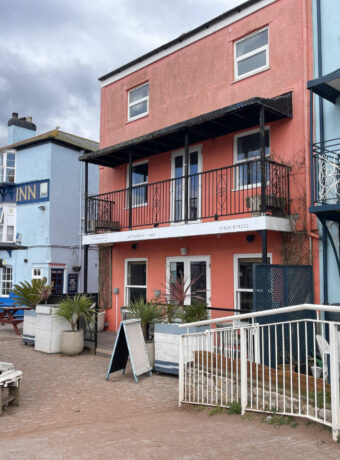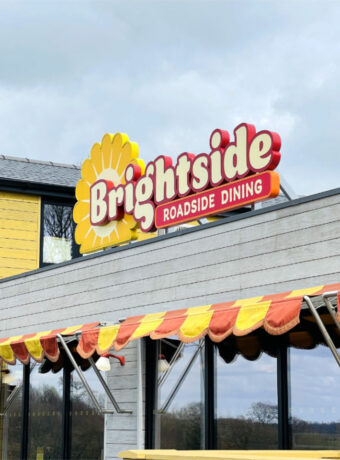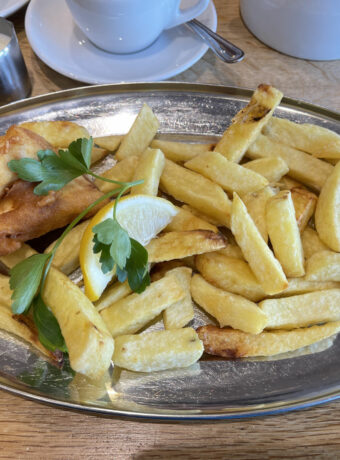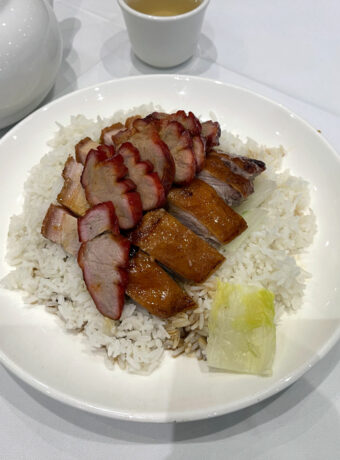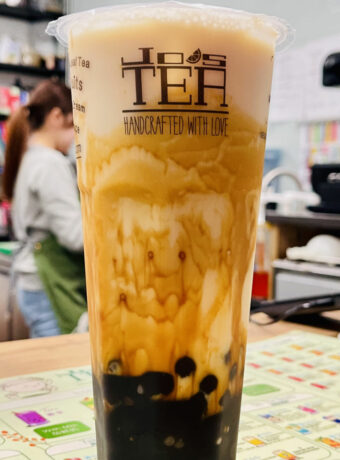All photos and images are copyright protected. Digital images and prints are available for purchase, please use the contact page or leave us a message below. All rights reserved
When in Cambridge, visit the Cambridge Market Square for seriously tasty street food from all over the world. Being Malaysian, we naturally gravitated towards Azuma, a food stall serving famous Malaysian and Japanese dishes. How do you find it? Look for the Malaysian and Japanese Flag.
Flying the Malaysian and Japanese flag somewhere in the Market Square in Cambridge is Mr Lee’s Azuma food stall. From our visits on two separate occasions, the stall moved from one end of the market to the other so it is easier to just locate the stall by looking for the flags.

On a busy day, you might find that the queue in front of the stall builds up quickly with throngs of tourists, locals and students alike. They all have one thing in common, a desire to sample the freshly prepared Malaysian and Japanese street food. If you are unfamiliar with what is on offer, a large banner with photos of all the dishes is on hand to help you decide. You can find a complete list under Menu below.
Some of the popular dishes from Malaysia include Char Koay Teow, Hokkien Char Mee, Penang Laksa Noodle, Nasi Lemak, Rendang and Hainanese Chicken Rice. While, on the subject of Malaysian dishes, we won’t be rating any of his Japanese dishes here as we haven’t ordered any. But instead, we will focus only on dishes we ordered.


What We Had
Penang Laksa
Penang Laksa made it all the way to number 9 on CNN’s Top 50 best dishes of the world so it is both well known and much loved. So, did Mr Lee’s Laksa cut it?
Unfortunately, not quite. The taste was somewhat authentic, but it lacked certain ingredients that would have just given it the edge. Penang Laksa is a rice noodle dish in a tamarind-based fish filled broth. It is typically served with freshly sliced cucumber, pineapple, mint, and red onions much like Mr Lee’s below. Hard boiled egg and the lemon are not typical additions.
Azuma’s laksa, unfortunately lacked the key ingredient of heh koh, a black prawn paste which really makes the entire dish. The broth was tasty and well spiced, but seemed to be lacking in fish ingredients (typically mackerel). Most authentic versions of this dish have Vietnamese coriander boiled up within the broth and that gives it a special aromatic punch. This too was missing.
In all, we would say, it was a good effort but somehow still not quite the same. Still when you’re 6000 miles away, and you’re desperate for a laksa kick…

Penang Char Koay Teow
Yes, the king prawns are in there somewhere, and and it has all the right ingredients to make this a good Char Koay Teow including the use of the correct type of flat rice noodles. However, frying Koay Teow on a griddle just doesn’t cut it. It’s a flat and smooth griddle that would have worked for Teppanyaki but for Char Koay Teow, you really need a proper cast iron wok and high pressure wok burner. For the latter, we are talking super hot multi-ring gas stove that is at least 5 times hotter than your conventional cooker.
Here again, while it had all the main key ingredients, from Chinese sausage to bean sprouts, the noodles were either slightly under cooked or burnt together. The bean sprouts were also on the undercooked side, making it a bit ‘green’ tasting.
Real Penang Char Koay Teow really needs ‘wok hei’. Typically flash fried over a burning hot charcoal fire, the noodles cooked super fast after the addition of all the key ingredients. In this case, Mr Lee’s sauce and flavouring were not far off. This dish was simply lacking authenticity caused by the lack of a wok and a burning hot fire.

Nasi Lemak
To a true-blood Malaysian, Nasi Lemak is a summary of everything Malaysian. Every ethnic culture within the country has some version of their own Nasi Lemak and yet everyone comes together to claim it is theirs collectively.
After the first two disappointments, it was a real pleasure to be surprised by a singularly authentic Nasi Lemak. Yet, be prepared for the spiciness of the curry – it is certainly not for the faint-hearted. The Ikan Billis (anchovies) curry is as hot as it is red and pairs really well with the hard boiled egg and coconut milk rice. The chicken curry is a generously portioned chicken thigh and the other condiments of fried ikan billis (anchovies), nuts and cucumber are perfect complements.

Overall, if you’re looking for something authentically Malaysian at Azuma, the Nasi Lemak is the obvious choice.
(Posh) Azuma Japanese & Malaysian Street Food Menu
What’s on the menu? Apart from seasonal dishes such as rice dumplings (Nyonya Bak Chang) for dragon boat festival, cakes (Taro Cake, Pineapple Cake, Crispy Prawn Cake) and desserts (Bubur Cha Cha), Teo Chew Dumplings, Rojak), here is the fixed menu.
Snacks
- Chicken Gyoza
Yakisoba (Stir Fried Noodle)
- Vegetable and Tofu Yakisoba
- Chicken Yakisoba
- King Prawn Yakisoba
- Malaysian Mee Goreng
- Penang Char Koay Teow
- Cambridge Hokkien Mee
Ramen (Noodle in broth)
- Ebi (King Prawn) Noodle Soup – Penang Hokkien Prawn Noodle
- Black Pork Miso Ramen
- Tofu Miso Ramen
- Asam Laksa
- Wat Tan Hor (Fried flat rice noodle)
Gohan (Rice)
- Cambridge Nyonya Rice
- Japanese Braise Pork Belly Rice
- Gyudon (Beef bowl)
- Oyadon (Chicken and egg bowl)
- Chicken Katsu Curry
- Chicken Teriyaki Rice
- Tofu Gohan
- Malaysian Chicken Curry Rice
- Nasi Lemak
- Nasi Goreng (Malaysian Fried Rice)
- Hainanese Chicken Rice
- Beef Rendang Rice
Location
Address: Market Hill, Cambridge CB1 0SS
Azuma Website: https://azuma.ueniweb.com
Opening Hours (please check by calling 07727 525666)
- Monday: Closed
- Tuesday: Closed
- Wednesday: –
- Thursday: –
- Friday: –
- Saturday: –
- Sunday: –
